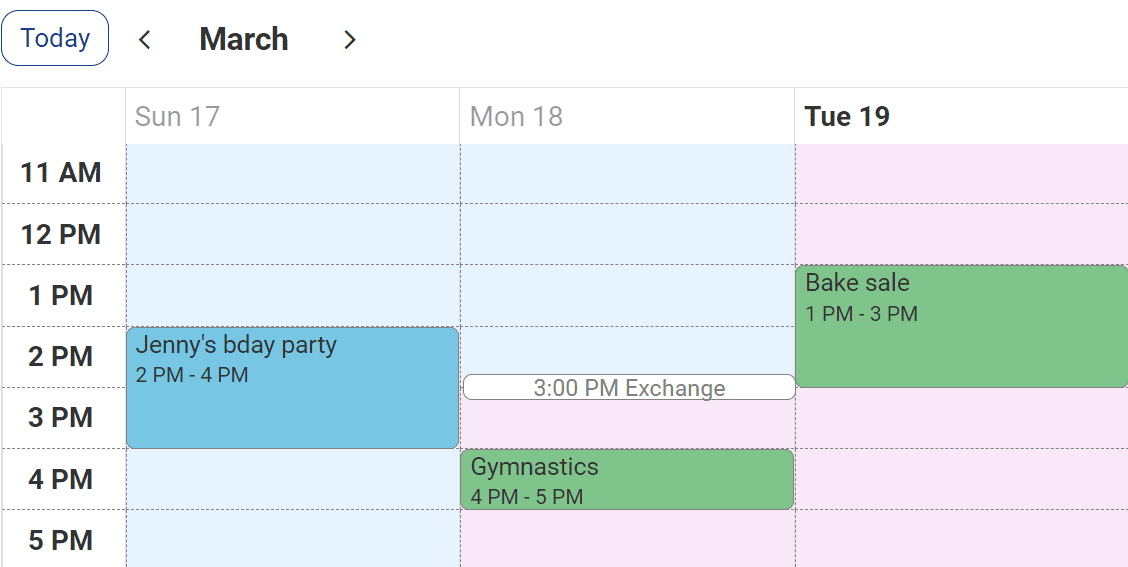Custody & School: Common Issues
Parents must make sure their children get an education — whether it's at a public or private school or through homeschooling.
Schooling is a point of contention for many co-parents. Creating a parenting plan for your school-aged child that covers education and extracurriculars can prevent or ease contention. The following will help you figure out what to do when you can't decide which school your child will attend, you've lost custody over school attendance, or you want to homeschool your child.
School enrollment
Your type of custody impacts which school your child can attend.
Parents who have 50/50 custody but live in different school districts
When parents have 50/50 custody but live in different districts, the child can attend school in either district.
It's often best to choose the better-performing school, and the court generally takes this approach if parents go to court. If the schools are of a similar quality, consider the factors listed in the next section.
Parents who have joint legal custody
Parents who have joint legal custody collaborate to decide which school their child will attend. If one parent has sole or primary physical custody (details in the next section), the school needs to be close to that parent's home.
Choosing the right school requires a lot of research. Consider the following when choosing a school for your child:
- Where does the school rank in terms of student performance?
- Do they offer pre-enrollment tours and meetings with school officials?
- If your child has special needs, does the school offer adequate support?
- Does your child have friends who attend the school?
- What extracurriculars does the school offer?
- If it's a private institution, how much does it cost?
If parents can't agree, the court picks the child's school based on the child's best interests.
Parents who have primary physical custody
In a primary physical custody arrangement, the child attends school in the district where the primary parent (also called the custodial parent) lives.
The child can end up in the nonprimary parent's school district if parents agree or the court decides that it's best for the child.
Parents who lost custody over school attendance
Truancy is when a child misses several school days without the permission of a parent, legal guardian, doctor or another adult who has authority over them. Some states outline exactly how many unexcused absences in a single month qualify as truancy.
If your child misses class, the school will notify you. A truancy officer may also visit your home. You'll likely have a meeting with teachers and school administration to discuss how to prevent future absences.
If the situation doesn't improve, the school district can bring a lawsuit against you. If the court finds that you are at fault, it may impose fines, jail time or loss of custody. Your child may also have to appear in juvenile court.
Your co-parent can also ask the court for sole custody if you have neglected your child's education.
Only a small proportion of parents have lost custody solely over school attendance. Regardless, getting your child to school should be a top priority.
If you've lost custody over school attendance, heed this advice when building a case to regain custody.
Hire a lawyer
A lawyer will know how to best advocate for you to get custody back. Formulating arguments and determining which evidence will best help your case is complicated. A lawyer takes on these tasks for you to build the most thorough case possible.
Prove that your child had permission to miss school
Showing proof that you had good reason to keep your child from school can help your case. Gather signed and dated notes written by you, the other parent or a doctor excusing your child from school.
Show you have a plan to change
Once you've lost custody over school attendance, the court will want to see that you will put in the work to put an end to your child's truancy.
Present the court with an action plan for getting your child to attend school. This may involve changing your work schedule, signing your child up to ride the school bus, enforcing a stricter bedtime, getting your child counseling, etc.
Parents who homeschool in custody cases
Homeschooling means parents provide the children's instruction themselves. Rules and regulations vary by state.
Parents with sole legal custody can decide on their own that homeschooling is best for their children.
Parents with joint legal custody can agree to homeschool their children. It's recommended you put the agreement in writing, covering who is responsible for teaching the child, the curriculum, etc. If parents disagree, they must return to court and get a verdict from a judge.
Typically, the parent who has the child in their custody most of the time provides instruction. If the child will be in each parent's home during the school year, both parents should be equipped to instruct the child.
Managing school and custody obligations
Juggling your child's schooling and extracurriculars with your custody schedule is a tall task. Luckily, Custody X Change has the tools you need to stay on top of it all.
Build a color-coded calendar to easily see which parent is responsible for getting your child to school each day.
 You can customize this with Custody X Change.
You can customize this with Custody X Change.
Use the activities calendar to keep track of your child's extracurriculars. See where they land in relation to your exchange times.
 You can customize this with Custody X Change.
You can customize this with Custody X Change.
Collect your child's school information, like the names of their teachers and more, using the child-info tool.
 You can customize this with Custody X Change.
You can customize this with Custody X Change.
Custody X Change has the tools you need to balance custody and your child's schooling.
